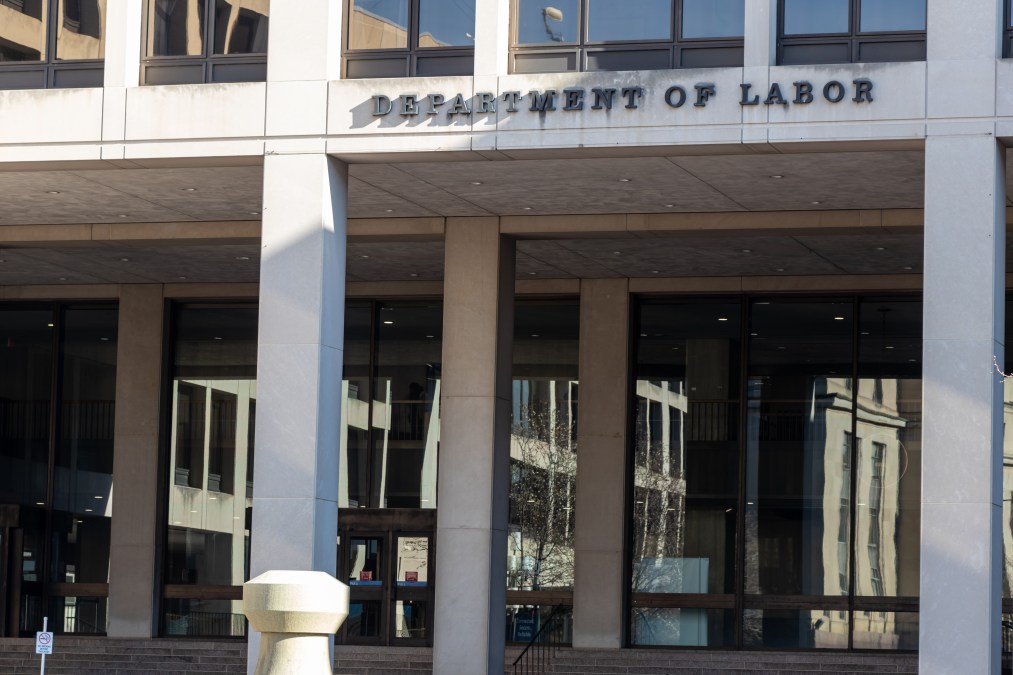Labor Department has ‘a leg up’ on artificial intelligence, new CAIO says

A shout-out from the White House doesn’t happen to federal agencies every day, but the Department of Labor got a turn in March when it was lauded in a fact sheet for “leading by example” with its work on principles to mitigate artificial intelligence’s potential harms to employees.
Mangala Kuppa, who took over as DOL’s chief AI officer this week after previously serving as its deputy CAIO, believes the agency has even more to be confident about when it comes to its work on the technology, possessing a “leg up” on scaling AI quickly.
In an interview with FedScoop, Kuppa pointed to DOL’s previous efforts to modernize internal operations and customer-facing services as part of the department’s journey to implement emerging technologies like AI. Having foundational building blocks and existing infrastructure, along with existing AI applications, has made it “easier” for the agency to scale up, she said.
“It’s not a ‘big bang’ approach,” said Kuppa, who also serves as DOL’s chief technology officer. “Another aspect that we take very seriously in modernizing is [to] take this opportunity to not just update the technology, but also take this opportunity to re-engineer the business process to help the public.”
Kuppa pointed to an internal shared services initiative that designated the agency’s Office of the Chief Information Officer to be a “shared services provider for all Departmental IT services.” That process, Kuppa said, has allowed the department to keep an inventory of all systems and technologies and understand where the legacy systems or opportunities for improvement might exist.
“Using that methodology, we’ve been looking at all high-risk systems, because maybe the technology is very legacy and outdated,” Kuppa said. “We’ve been using that methodology to start those modernization initiatives.”
By considering the age of the technology, the operations burden, security vulnerabilities, regulation compliance and other parameters, DOL came up with a methodology that scores each mission system to determine if it is a candidate for modernization. The agency then looks at the scores on a consistent basis and revises based on new information that becomes available.
These systems can be major: the DOL’s Employment and Training Administration, for example, which provides labor certifications when a company files for hiring an immigrant workforce, was scored for modernization.
“Being an immigrant, I wasn’t aware DOL had a hand in my immigration journey there,” Kuppa said.
The Technology Modernization Fund has played an “instrumental” role in the department “finding the resources to modernize,” Kuppa said.
She gave the example of using TMF funds to expedite temporary visa applications, which is expected to save 45 days of cycle time for processing labor certification applications.
According to a case study on the TMF site, that project contributed to $1.9 million in annual cost savings, and a key part of the innovation allowed the application forms to auto-populate with the previous year’s information.
“Usually all immigrants eventually start filing for permanent visa applications,” Kuppa said. “Again, you have to repeat the process of labor certification, and so we had two different systems not communicating with each other.”
For Kuppa, modernization is ultimately an exercise in reimagining where new technologies can ultimately be most helpful.
“We have great partnership, we work very closely with our programs and then we have these dialogues every day, in terms of the system’s development lifecycle,” she said. “And that’s how we approach modernization.”

